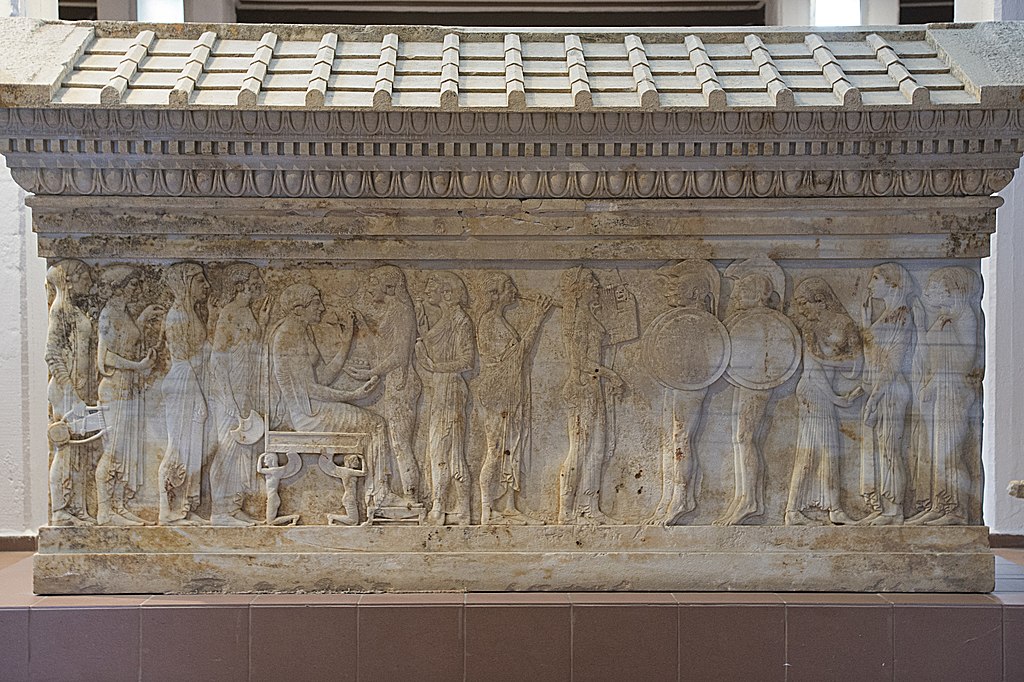Polyxena Sarcophagus Now in Troy Museum 7938
Polyxena Sarcophagus is a remarkable object as it is one of the earliest stone sarcophagi with figural scenes ever to have been found in Asia Minor. It represents the early example of the Proconnesian marble workshops. It has impressive dimensions of 3.32 meters in length, 1.60 meters in width, and 1.78 meters in height. A whole in the cover of the sarcophagus indicates that it had been robbed in antiquity. Moreover, fragments of a wheeled cart that transported the corpse to the tumulus were discovered beneath the terracotta tiles that surrounded the sarcophagus. Although the figures of the reliefs depict mainly women, the person buried was a 40-year-old man. The reliefs on the sarcophagus show a funerary celebration on three sides, and on the back what is believed to be the sacrifice of Polyxena by Neuptolemos in front of the tomb of his father Achilles. Although not mentioned by Homer, Polyxena was a well-known figure of Greek mythology. She was the youngest daughter of King Priam of Troy and his wife, Hecuba. An oracle prophesied that Troy would not be defeated if Polyxena's brother, Prince Troilus, reached the age of twenty. The siblings were ambushed when they were attempting to fetch water from a fountain, and Troilus was killed by Achilles, who soon became interested in Polyxena. He seemed to trust Polyxena, and he told her of his only vulnerability: his heel.
Polyxena revealed this secret to her brothers, Paris and Deiphobus, who ambushed Achilles and shot him in the heel with an arrow. At the end of the Trojan War, Achilles' ghost came back to the Greeks to demand the human sacrifice of Polyxena to appease the wind needed to set sail back to Greece. She was to be killed at the foot of Achilles' grave. Polyxena was eager to die as a sacrifice to Achilles rather than live as a slave. She refused to beg for mercy and died bravely as the son of Achilles, Neoptolemus, slit her throat."Relevante Bilder
Relevante Artikel
PolyxenasarkophagDer marmorne Polyxenasarkophag wurde 1994 in einem Grabhügel, dem Kizöldün-Tumulus, bei Gümüşçay, Landkreis Biga, gefunden, der nicht weit entfernt vom Biga Çayı, in der Antike Granikos, in der nördlichen Troas liegt. Er wird in spätarchaische Zeit datiert und damit handelt sich um einen der frühsten griechischen Sarkophage mit Reliefdekoration. Seit 2018 ist er im Troya Müzesi ausgestellt. .. weiterlesen




